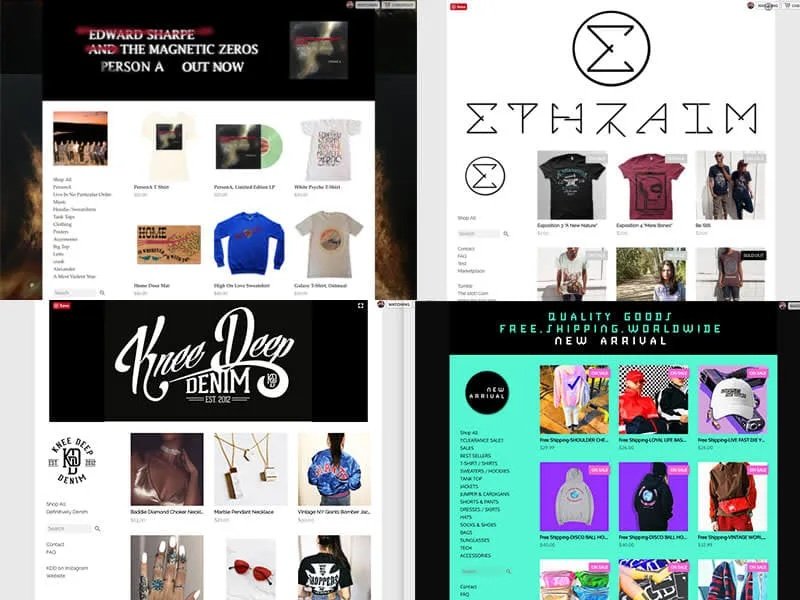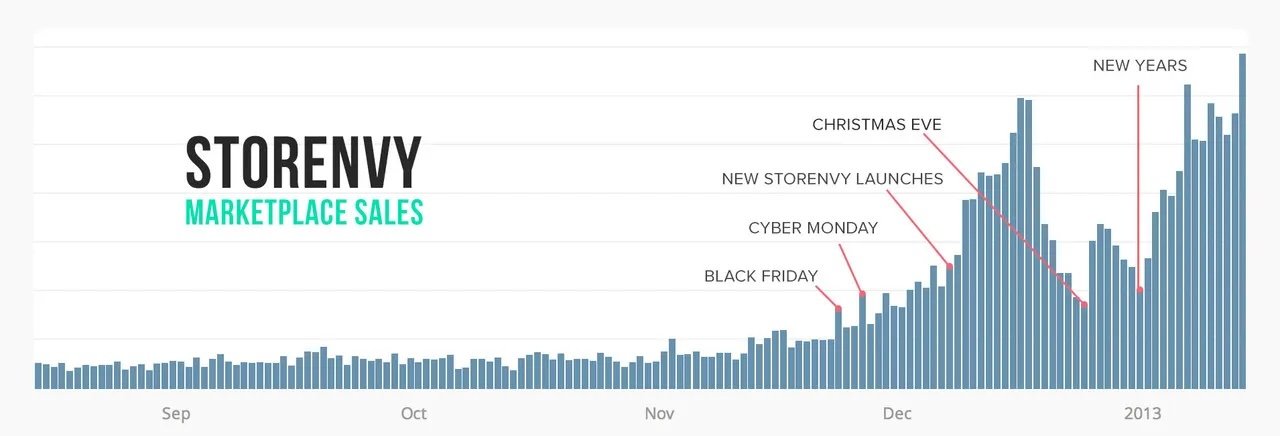Platform Hacks: Build Supply With Single-User Mode
How to overcome the “Chicken & Egg Problem” of a marketplace or platform by changing the conversation.
The following is an exploration of one of several platform/marketplace lessons I learned growing Storenvy to millions of shoppers buying from a booming community of over 100,000 online merchants without spending any money on marketing.
… you’ll have no other choice than to ignore one half of your customers at any given time.
Starting a marketplace or platform from scratch is challenging. Consider the Core Value Promise your platform business makes to your customer. A company’s Core Value Promise is an implied contract that says, “If you will be my customer, I will provide you with X value.” As a marketplace or platform, your Core Value Promise is this: “We make introductions between sellers (supply) and buyers (demand) that lead to transactions.” But, alas, if you don’t have any buyers yet, you can’t make these introductions to your sellers. Adversely, without a critical mass of suppliers/sellers, it’s impossible to generate consumer demand. This is known as the “Chicken & Egg Problem”. This conundrum is a major obstacle that has caused an untold amount of marketplaces never to escape the levels of a lifeless ghost town.
You’ve also got two sets of mouths to feed. Two distinct customer groups to make happy — your supply (sellers) & your demand (buyers). It’s hard enough in business to please one set of customers, but successfully catering to two groups simultaneously is often exponentially harder. Different signup flows. Different FAQs. Different support queues. Different marketing channels. Most importantly, there are different product experiences and customer communities to build. And to make matters worse, most startups are extremely resource-constrained and typically forced to focus on just one thing at a time. This means you’ll have no other choice than to ignore one-half of your customers at any given time.
This sounds like a tough battle to win. So, let’s change the conversation.
SINGLE-USER MODE
There was one primary technique that was used to hack supply at Storenvy, and I call it “Single-User Mode.” This term means giving your users a reason to use your product before a network is present. In other words, act like a tool or SaaS product to your initial suppliers so that they may happily use your product without any added customer demand coming from you. This is also referred to as a “Trojan horse technique.” Examples of this approach could include business tools, organization tools, publishing tools, and much more. In video gaming, this is referred to as “Campaign Mode,” where you compete against the game’s built-in AI, as opposed to “Multiplayer,” which usually involves competing against other real players online. The game is still fun and has value even if no other players are online. Then, the fun only expands as more people join the game. By providing some sort of standalone toolset, early users (or players) are drawn into using the product (or game) without relying on a nonexistent network.
Storenvy started as a simple way to quickly set up a free online store without much skill or effort. We launched the. Marketplace half of the business later, but the original focus was strictly on the custom store-builder. (Here’s a very simple example.) Early suppliers did not expect that we were going to drive them customers or drive them sales. Instead, we had the simplest and most affordable e-commerce store builder on the market in 2010 and hundreds of new stores were launching each week without any advertising. We ignored the consumer demand portion of the Chicken & Egg equation and focused on building a large set of tools small businesses require to run their online selling workflow. These suppliers were coming to us to fill a need that was ancillary to customer demand — a nice online store they could promote to their existing customers through social media and other channels they were already using. We made their existing processes easier or got them online for the first time. The online store builder on its own is valuable to the supply side in Single-User Mode because it provides “utility,” “access,” and “affordability” as other standalone platforms were charging a hefty monthly price. Instead of offering “introductions” as our Core Value Promise, we simply provided customizable store software to small businesses. This gave us our initial critical mass of supply without relying on any network effects or marketplace dynamics.
By the time the Storenvy Marketplace launched many months later, we had over 10,000 stores open for business on launch day with gobs of products ranging across countless product categories. Demand came rushing in to find a large selection of unique products already waiting for them to purchase. You can see in the image below how much sales boomed when we opened the flood gates of the “New Storenvy” marketplace.
A great example of a successful Single-User Mode is early Instagram. The initial Core Value Promise of Instagram was that it made everyone a great photographer without needing a nice camera. The filters and the seamless sharing to other social media were the initial draw for users, and it was fantastic at both activities. The focus was on creation and publishing — not consumption. Later on, the feed, discovery, and social networking portions of the app became the focus, but these were not the draw for the initial wave of users. Instagram was simply the best way to snap, tweak, and publish photos. The network effects emerged after enough content creators were on the platform to start drawing an audience.
Some may not remember that Tumblr, the popular micro-blogging network, started out as a standalone publishing tool. With a few clicks, you could launch a blog and even use your own URL with little or no technical skills. (In 2007, this was a big deal.) After attracting countless content creators to publish and share their content on standalone websites, the discovery and feed portions of the Tumblr dashboard emerged naturally. A decade later, the standalone blogging portion of the product has moved to the back of Tumblr’s priorities. Still, this initial focus on Single-User Mode allowed them to create a powerful network by attracting content producers.
These examples became the “best” at some invaluable function that their supply side needed before attacking the demand part of the Chicken & Egg problem. Their Core Value Promise initially revolved around “utility” and changed to “introductions” later on. Although a flourishing network was the endgame, they first acted like a tool or a SaaS product to build a sticky relationship with their suppliers. This meant that the suppliers treated the service as a “home” for something closely tied to their goals and workflows regardless of the liquidity created by the network. If you want to hack the Chicken & Egg problem, become the home of something useful for your suppliers (besides demand).


